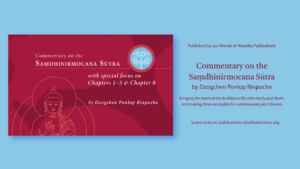I was sitting in my living room, watching a teaching on my computer, when outside my window I suddenly saw a tree fall down after being cut at its root. Fortunately, I was in a space of watching my mind closely, and I saw on the spot the many thoughts and feelings that arose. I was shocked, and almost immediately felt a sense of loss, because I was used to looking at a beautiful, luscious green tree, and now there was an empty space where it had lived and the house it had covered looked bare.
I almost instantly recognized the feelings of suffering that came up, yet I also saw that these feelings were going against the grain of reality. Change had already occurred. Change was continuing to occur. The tree had been cut down for a reason that I didn’t know. Something in me struggled with the newness of the tree being gone. Something I was used to had suddenly changed drastically in front of my eyes, and this caused some suffering. I felt a sinking feeling in my stomach, and thoughts arose such as, “Oh no, what further change is going to happen based on this change?”
If I can see that all this happened in my mind with a tree I wasn’t particularly attached to, imagine what my mind is going through most of the time!
Things are always changing. In those flashes when I am able to watch my mind when impermanence reveals itself, beyond or alongside the feelings of shock and fear, and before too much suffering has taken over the situation, there can be moments of openness and relaxation—a glimpse into space and the true nature of things. I have found that being in touch with and more open to that groundless reality can somehow be calming.
Furthermore, it’s not that impermanence “happened” when the tree was cut down. It’s that I stopped not seeing it. Impermanence became visible to me in that moment.
Contemplation
Throughout this year, I’ve often recalled a verse by the great master Nāgārjuna. And as I wrote this article, I encountered another wonderful verse of his. Both have helped me explore the question of the true nature of the world, of all phenomena, and they also might help you relax into the clear, open spaciousness that impermanence can reveal. After a few minutes of calm abiding meditation, it might help to contemplate one of the following verses:
Like a dream, like an illusion,
Like a city of gandharvas,
That’s how birth, and that’s how living,
That’s how dying are taught to be.(Translated under the guidance of Khenpo Tsültrim Gyamtso Rinpoche by Jim Scott and Ari Goldfield)
By knowing arising, one knows dissolution.
By knowing dissolution, one knows impermanence.
Knowing how to engage impermanence,
One will realize the genuine dharma.(Translated under the guidance of Dzogchen Ponlop Rinpoche by Tyler Dewar)

Shana Fletcher is a resident at the Nalanda West Three Paths program in Seattle, Washington. Having recently graduated with a Bachelor of Arts degree in philosophy from Smith College, she decided to join the Three Paths residential program in order to deepen her study and practice of Buddhism. She has attended Nitartha Institute since 2018, and is interested in health and wellness, with an emphasis on the Asian healing arts.






